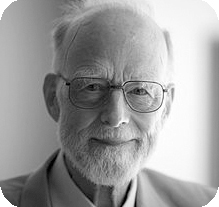
A.M. TURING AWARD WINNERS BY...
C. Antony ("Tony") R. Hoare

United Kingdom – 1980
Short Annotated Bibliography
Hoare has published a great many papers and books. The following are a sample of his key publications.
- Hoare, C.A.R., An axiomatic basis for computer programming, Communications of the ACM, Vol. 12, Num. 10, October 1969, pp. 576-580, 583. This is one of the most influential papers on the theory of programming. It is the paper in which he showed how to reason about program execution using logical specifications of statement behavior that have become known as Hoare triples
- Hoare, C.A.R., Hints on programming language design, Technical Report STAN-CS-73-403, Stanford University, October 1973. This paper (based on a keynote address presented at the SIGACT/SIGPLAN Symposium on Principles of Programming Languages, Boston, October 1-3, 1973) presents the view that a programming language is a tool which should assist the programmer in the most difficult aspects of his art, namely program design, documentation, and debugging. It discusses the objective criteria for evaluating a language design, and illustrates them by application to language features of both high level languages and machine code programming. It concludes with an annotated reading list, recommended for all intending language designers. A copy can be found here.
- Hoare, C.A.R., The emperor's old clothes, Communications of the ACM, Vol. 24, Num. 2, February 1981, pp. 75-83. In this paper (his Turing Award lecture) Hoare again issues the warning that simplicity and elegance are essential if software is to remain within intellectual control.
- Hoare C.A.R., Communicating Sequential Processes, Prentice- Hall, 1985, 256 pages, ISBN 0-13-153271-5.
- Hoare, C. A. R. and C. B. Jones, Essays in Computing Science, Prentice Hall International, 1989. This collects many of Hoare's early papers and links them both backwards and forwards to show their context and impact.
- Hoare C.A.R., and Jifeng He, Unifying theories of programming, Prentice Hall, 1998.
- Hoare, C. A. R., and Robin Milner, "Grand challenges for computing research," Computer Journal, Vol. 48, Num. 1, 2005, pp.:49-52.
- Hoare C. A. R., "The ideal of program correctness: Third Computer Journal lecture," Computer. Journal, Vol. 50, Num. 3, 2007, pp. 254-260.
- Roscoe, A.W., Cliff B. Jones, Kenneth R. Wood (Editors), Reflections on the work of C.A.R. Hoare, Springer, 2010, ISBN: 978-1-84882-911-4 (Print) 978-1-84882-912-1 (Online).




























 THE A.M. TURING AWARD
THE A.M. TURING AWARD